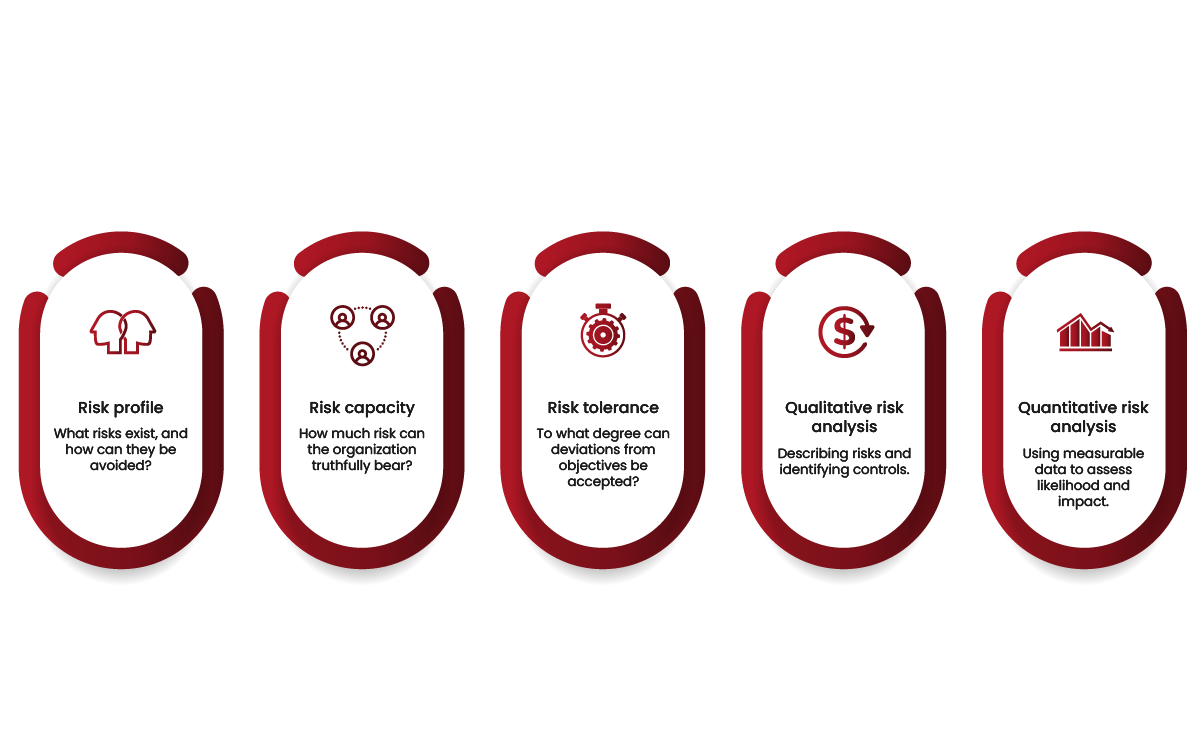Our offices will be closed for the holiday season from December 25, 2025, to January 11, 2026. For urgent matters, please contact support@pecb.com.
Our offices will be closed for the holiday season from December 25, 2025, to January 11, 2026. For urgent matters, please contact support@pecb.com.
Our offices will be closed for the holiday season from December 25, 2025, to January 11, 2026. For urgent matters, please contact support@pecb.com.
Today’s global market is more interconnected than ever before. This increasing complexity makes it challenging for organizations to clearly identify opportunities and threats that may affect not only their performance but also their long-term sustainability. Hence, enterprise governance has taken center stage, with defining risk appetite becoming a critical element.
The COSO ERM Framework defines risk appetite as “the types and amount of risk, on a broad level, that the organization is willing to accept in pursuit of value.” To put it differently, it reflects an organization’s willingness to take risks.
Similarly, ISO 31000 defines risk as the effect of uncertainty on objectives, whether positive or negative. For this discussion, risk is understood as potential opposing outcomes, while situations that generate advantages or benefits are referred to as opportunities.
An organization’s perception of risk and its ability to manage it depend on many factors that often become fully evident only in retrospect. This means that stakeholders may hold different views on what constitutes an acceptable level of risk, and they can only be proven right or wrong when the set risk materializes in either a positive or negative outcome.
A carefully prepared risk appetite statement helps connect these differences by turning abstract concepts into practical, planned guidance. Such a statement allows organizations to:
Defining risk appetite requires careful effort. Organizations must determine how much risk they are willing to take on and how both threats and opportunities will be combined into strategy implementation. This process should consider:
An organization’s ability to manage risk effectively can also be a competitive advantage. For example, if a company can manage a certain type of risk better than its competitors, it may choose to take on more risk in that area to strengthen its market position.
A strong risk appetite statement typically addresses:
The result is a complete framework that validates the organization’s risk position and aligns it with decision-making at all levels, from strategic planning to operational execution.

Once approved by the board of directors, the risk appetite must be clearly communicated across the organization. This step not only strengthens risk management practices but also points out broader organizational values, including:
In today’s uncertain business environment, a formal risk appetite statement is increasingly important. It balances an organization’s capacity to manage risk with the actual risks present, helping leaders follow opportunities while avoiding unmanageable exposure.
Before establishing risk appetite, organizations should carefully analyze their internal and external context, stakeholder needs, potential risks, likelihood of occurrence, and possible impacts. ISO standards provide robust guidance for this process, with ISO 31000 being the most widely recognized standard for risk management. It also serves as the foundation for other industry-specific risk management standards.
PECB’s training courses are designed to help professionals acquire the knowledge and skills needed to effectively identify, analyze, evaluate, and address risk.
PECB offers the following training programs:
These certifications are ideal for risk and quality professionals, project managers, and consultants who aim to integrate risk management into organizational practices. Achieving certification not only demonstrates technical expertise but also reflects a commitment to applying internationally recognized best practices in risk management.
About the author
Vesa Hyseni is a Senior Content and Campaigns Specialist at PECB. She is responsible for creating up-to-date content, conducting market research, and providing insights about ISO standards. For any questions, feel free to reach out to her at support@pecb.com.
Share





